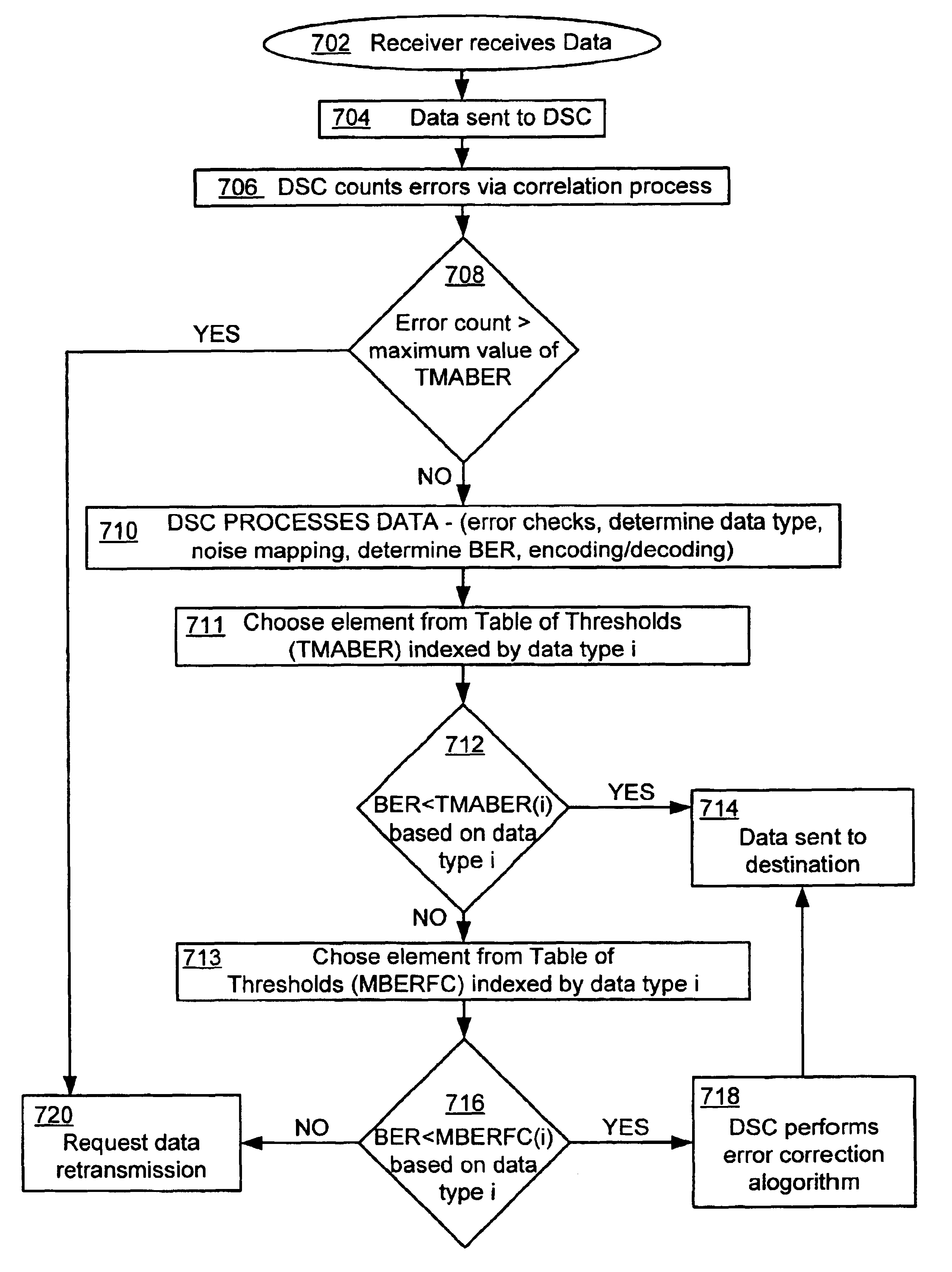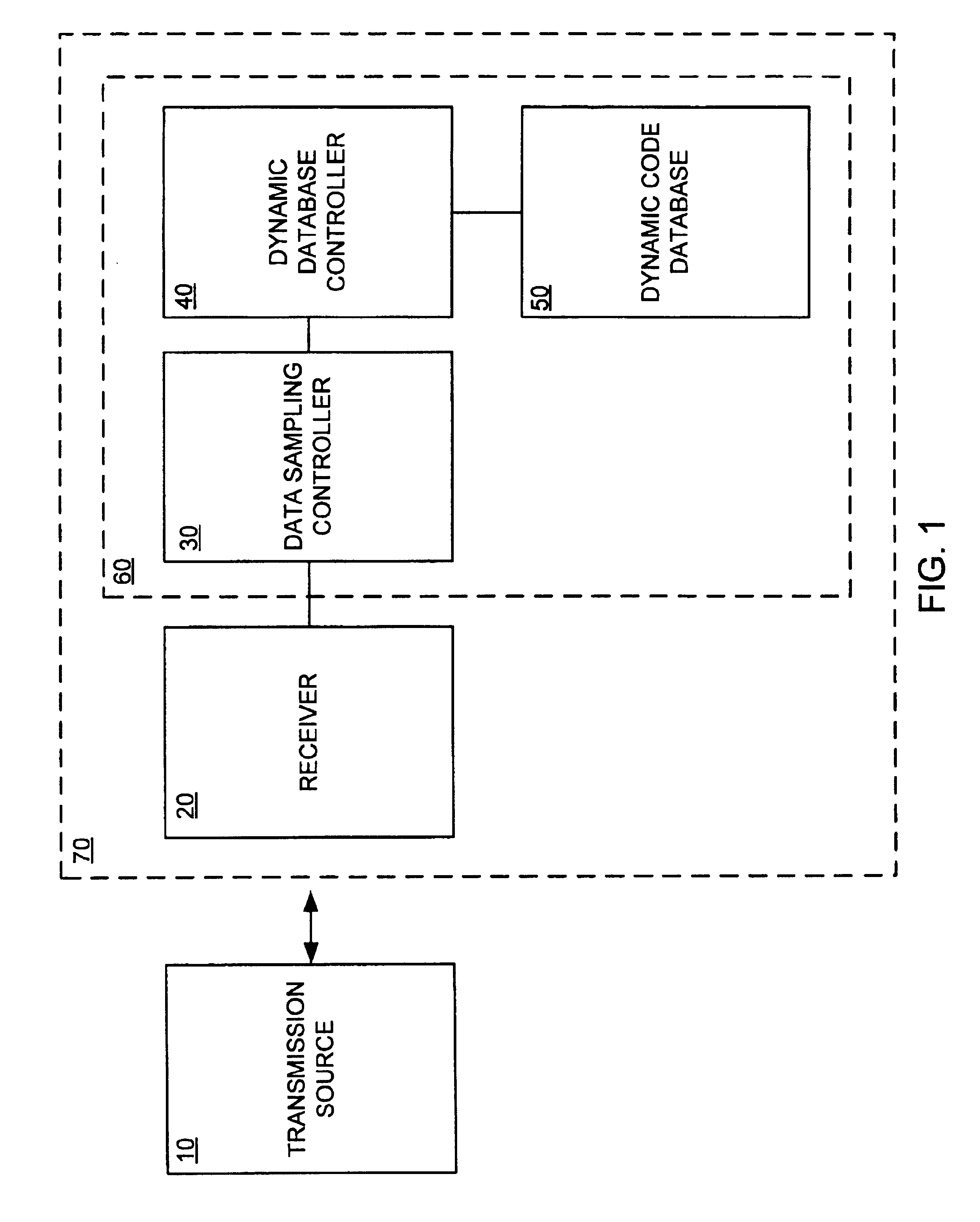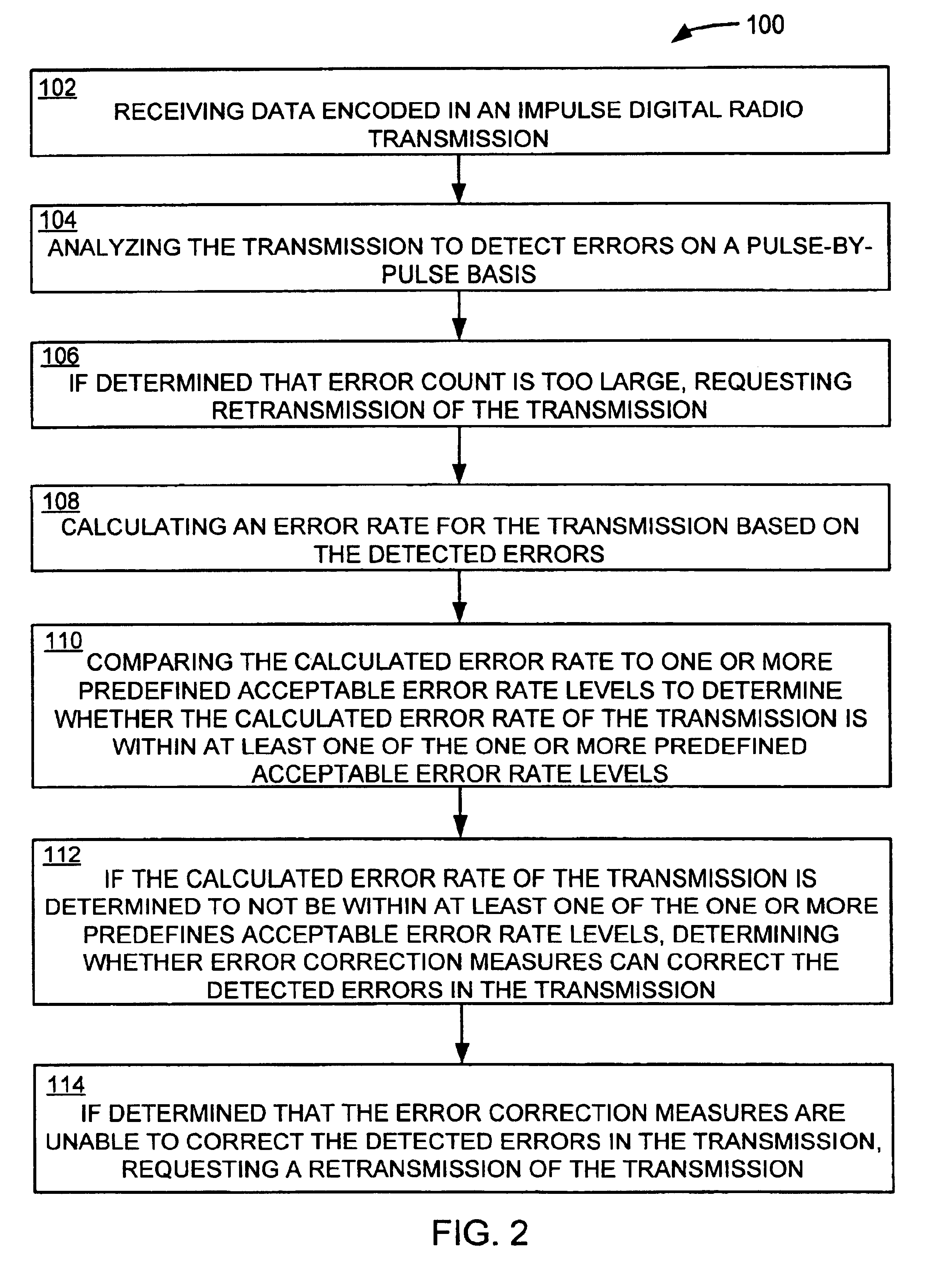Encoding and decoding ultra-wideband information
a technology of ultra-wideband information and encoding, applied in the field of ultra-wideband communication system and system, can solve the problems of no longer matching the negative pulse with the positive pulse, and the remedy will not substantially improve the accuracy of the transmitted information
- Summary
- Abstract
- Description
- Claims
- Application Information
AI Technical Summary
Benefits of technology
Problems solved by technology
Method used
Image
Examples
Embodiment Construction
[0026]When utilizing ultra-wideband pulse technology, typically not more than 10% of the available 1 ns pulse windows are available due to multi-path reflections and other physical constraints sometimes present in ultra-wideband technology. A 10% utilization of the available time windows results in a data rate or channel capacity of 100 Mbits per second, using 1 ns pulse windows. The remaining 90% of the pulse windows is not used and is therefore considered “inactive” due to these constraints. The challenge then becomes how to best utilize that 10% of “active” pulse windows. By using pulse position modulation (“PPM”) in conjunction with these “inactive” windows, the inactive windows may be utilized to further define digital data, giving an increase in total bandwidth, with no associated increase in the “active” pulses emitted.
[0027]The present invention contemplates that, when using a non-resonant antenna to transmit ultra-wideband pulses, positive pulses emitted by the antenna have...
PUM
 Login to View More
Login to View More Abstract
Description
Claims
Application Information
 Login to View More
Login to View More - R&D
- Intellectual Property
- Life Sciences
- Materials
- Tech Scout
- Unparalleled Data Quality
- Higher Quality Content
- 60% Fewer Hallucinations
Browse by: Latest US Patents, China's latest patents, Technical Efficacy Thesaurus, Application Domain, Technology Topic, Popular Technical Reports.
© 2025 PatSnap. All rights reserved.Legal|Privacy policy|Modern Slavery Act Transparency Statement|Sitemap|About US| Contact US: help@patsnap.com



